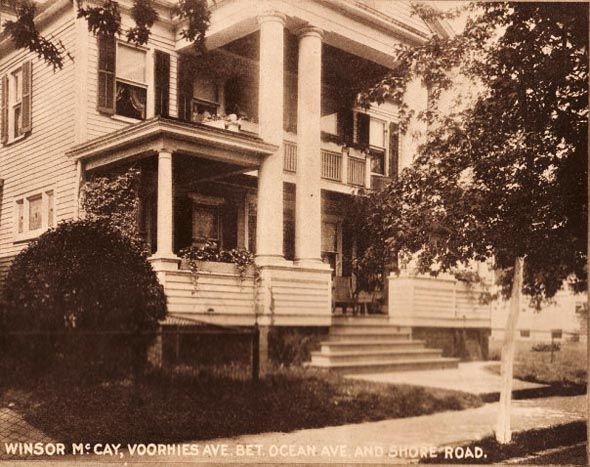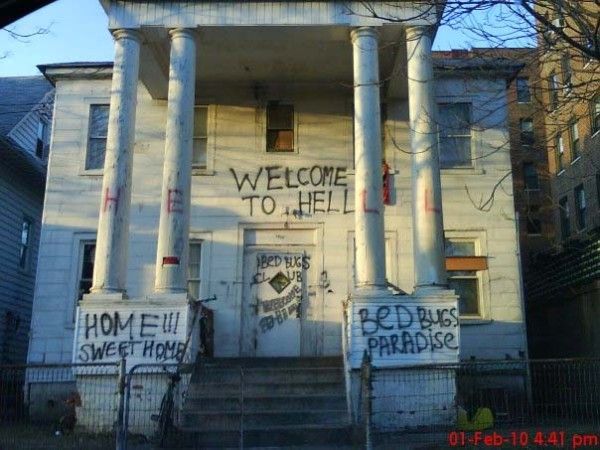Gut Renovation Begins At Winsor McCay "Hell" House

New owners of the problematic “Hell” house at 1811 Voorhies Avenue have started on a much-needed overhaul, including a complete gut renovation of the interior.
The news is a mixed bag for history buffs, who are interested in preserving the building after it was discovered that Winsor McCay, considered the grandfather of American animation, lived and possibly worked there.
On the one hand, the building won’t be torn down and replaced with condominiums, as the previous landlord sought. Nor will it be used as a halfway house, another failed attempt to change usage. The new owners, EEI Properties, wants to fully restore the house for two-family usage, preserving the facade and keeping the columns and exterior features that date back more than 100 years.
“This place was a junkyard,” Isaac Itah, a representative for EEI Properties, told Sheepshead Bites. “We’re keeping the nature of the house. The outside we’re keeping the same, and the reason is very simple. I believe the outside is beautiful.”
But the inside is shot, said Itah, and nothing is expected to stay. That might upset preservationists, as major alterations and new materials would make official landmarking impossible.
Sheepshead Bites, through the research of local historian Joseph Ditta, discovered in February that Winsor McCay lived there shortly after the turn of the century. McCay was a pioneering cartoonist who influenced Walt Disney, Moebius, William Joyce, and Maurice Sendak. His most iconic series was Little Nemo in Slumberland. After renting a room here for some time, he fell in love with the neighborhood and purchased a home in the area that has since been torn down. McCay died in 1934.
Itah said the company was unaware of the building’s history regarding Winsor McCay, but that it doesn’t matter much as the interior was too dilapidated to rehabilitate, and he’s not so sure there was anything remaining of historical value.
“This is New York and every second house here had history,” he said. “The house was in terrible condition and there’s nothing valuable in it. If I find a comic book, you’ll be the first person I call, trust me.”
The renovation is coupled with a change in usage. For decades, the building has been designated a Single Room Occupancy building, inviting tenants to rent single rooms on a short-term basis. The high turnover left the building in disrepair. After a failed bid to tear the building down and replace it with condominiums, former landlords neglected the property until residents revolted earlier this year, covering the building with graffiti that said “Bed Bug Paradise” and “Welcome to Hell.”
After a fire in March destroyed parts of the second floor, the property was handed over to EEI Properties, who is in the process of obtaining a new Certificate of Occupancy to a two-family home.
Itah said repairs should be completed in about four months, at which point they may sell it or keep it as an investment. If it hits the market, he said, they plan to bank on those iconic columns that draw so much attention from locals.
“We’re going to keep the appearance the way it is, and we’re going to advertise it as the ‘White House is for sale,'” he said.







